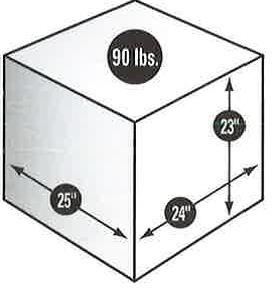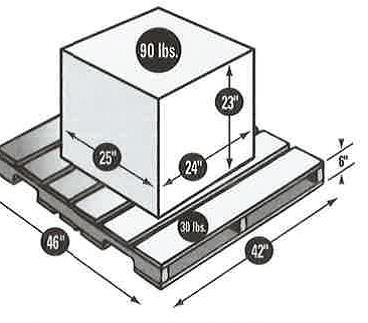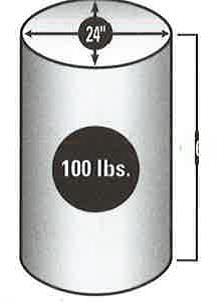| No. | Length (Inch) | Width (Inch) | Height (Inch) | Total Weight (lbs) | No. Of Pallets | Density |
|---|---|---|---|---|---|---|
Density Calculator
Miscellaneous Information
Classification and Measurements-Two of the most important factors that affect your shipping costs are the freight classification and the density of the shipment.
Determining Freight Classification-To correctly rate your shipment, it must be classified in accordance with the National Motor Freight Classification (NMFC) publication number 100. The NMFC lists classification codes and packaging requirements for all types of commodities. The NMFC also considers shipping characteristics such as density, storability, ease of handling and liability.
To ensure your shipment is rated properly, and so Dohrn Transfer can determine what commodities are being shipped, you should identify each commodity, its NMFC item number or its classification on your Bill of Lading. (Some classifications require that the shipper either declare the density on the Bill of Lading or include a statement of the released value.) With the correct classification information, Dohrn Transfer will be able to offer you the best possible service and most accurate rates.

How to Calculate Density- Measure the shipment’s height, width and length. Multiply those dimensions to obtain the cubic dimension of the shipment in inches.
For example, if the length is 25”, the width is 24” and the height is 23”, multiply them as follows: 25x24x23=13,800 cubic inches.
Next, convert cubic inches to cubic feet by dividing the cubic inch total by 1,728—the number of cubic inches in one cubic foot. For example: 13,800/1,728=7.98 cubic feet. Dividing the weight of the shipment by the number of cubic feet will provide the density. For example: 90 pounds/ 7.98= 11.27 pounds per cubic foot.
How to Measure Palletized Freight-To determine the cubic dimensions of a palletized shipment, combine the pallet dimension with the shipment.
For example, if the pallet is 46” long, 42” wide and 6” high, add the height of the pallet to the height of the shipment (23”) for a combine height of 29”. Then multiply as before: 46x42x29=56,028 cubic inches.

Next, convert the total cubic inches to cubic feet by dividing 56,028 by 1,728, which equals 32.42 cubic feet. The density then equals the weight 120(90 pounds for the shipment and approximately 30 pounds for the pallet) divided by the number of cubic feet. For example, 120/32.42=3.70 pounds per cubic foot.
How to Measure Cylindrical Freight-To determine the density of a cylindrical object, or any article that is not square, rectangular or elliptical, multiply the greatest dimension on the cylindrical plane by itself, then multiply that result by the object’s height or length. If the values is in cubic inches, divide the number by 1,728 cubic inches, and answer will provide your cubic dimension. As mentioned above, dividing the weight by cubic dimension (the number of cubic feet) will provide the density.

For example: A drum that is 24” in diameter and 36” tall would have the following density: 24”x24”x36”=20,736 cubic inches. 20,736/1,728=12 cubic feet. 100lbs/12 cubic feet=8.33 pounds per cubic foot.